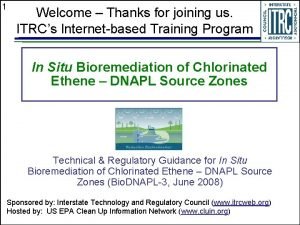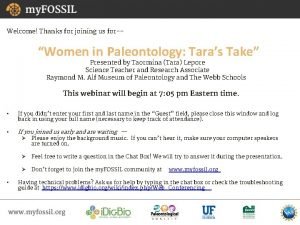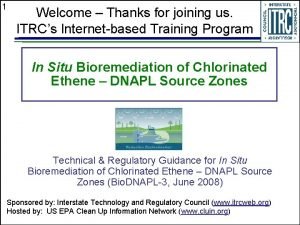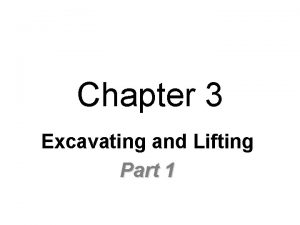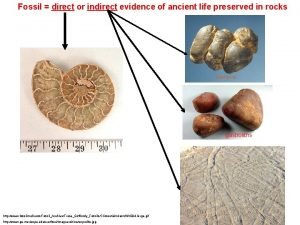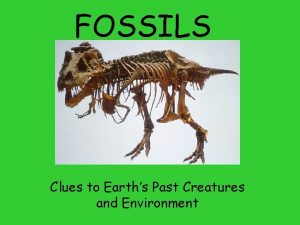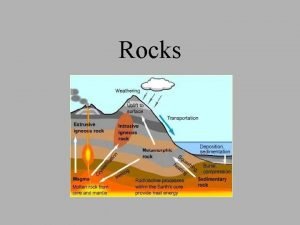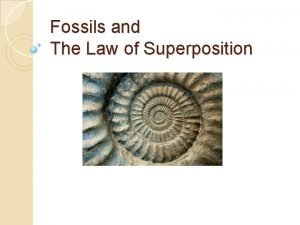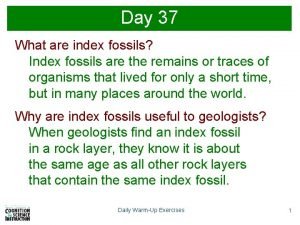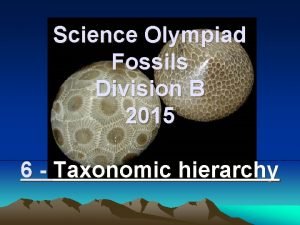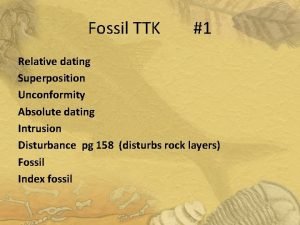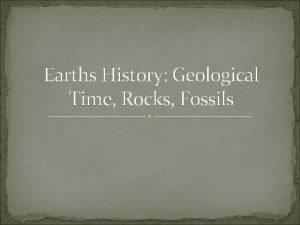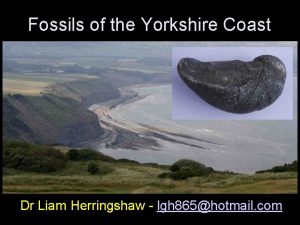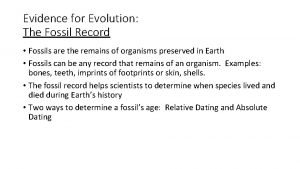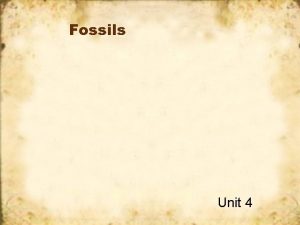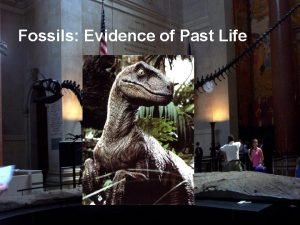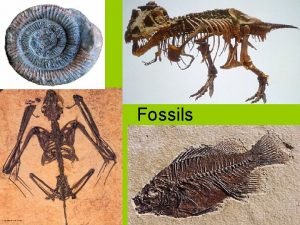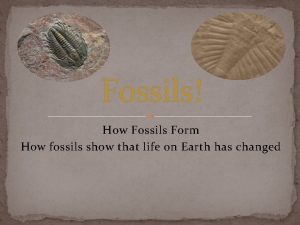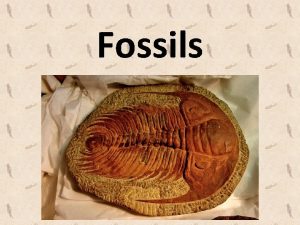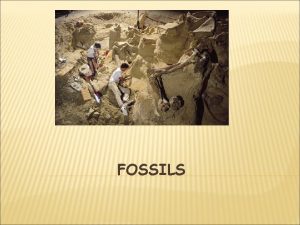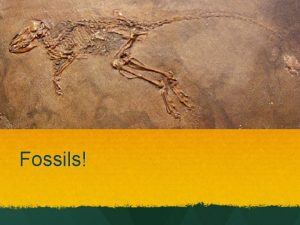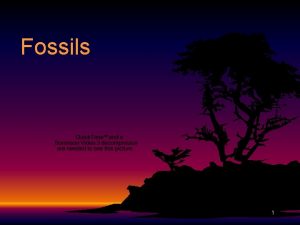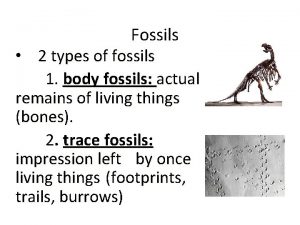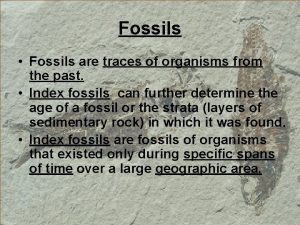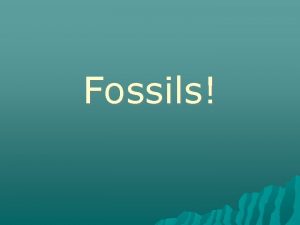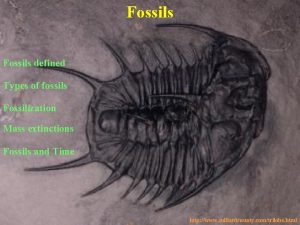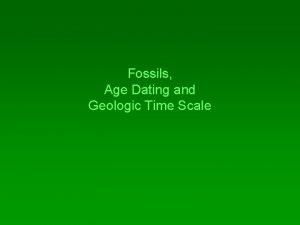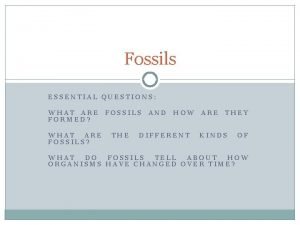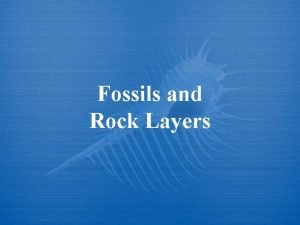Welcome Thanks for joining us for Excavating Fossils






















- Slides: 22

Welcome! Thanks for joining us for - “Excavating Fossils” Presented by: Dava Butler, Education Coordinator, Waco Mammoth National Monument and Graduate Student, Montana State University This webinar will begin at 7: 05 pm Eastern time. • If you didn’t enter your first and last name in the “Guest” field, please close this window and log back in using your full name (necessary to keep track of attendance). • If you joined us early and are waiting— Ø Please feel free to write a question in the Chat Box! We will try to answer it during the presentation. Ø Don’t forget to join the my. FOSSIL community at www. myfossil. org • Having technical problems? Ask us for help by typing in the chat box or check the troubleshooting guide at https: //www. idigbio. org/wiki/index. php/Web_Conferencing

Webinar Housekeeping, 1 • Ends no later than 8 pm Eastern time • You will not need a microphone; if you can hear us and see the Powerpoint, you are good to go. • Don’t forget to take survey after webinar ends! • What to do if Adobe Connect is not your friend? Hints: Try exiting and coming back into Adobe Connect. Or, type in the chat box for technical support to see if we can help.

Webinar Housekeeping, 2 • You can type questions or make comments at any time during the webinar in the Chat Box • Webinar is recorded and Powerpoint is freely available under “Resources” at www. myfossil. org • If you want “Series 1” attendance certificate (or CEU credit), you must: (1) Sign into Adobe Connect with your full name each time; (2) Remain and participate for the entire hour; and (3) Be a member of my. FOSSIL (sign up at www. myfossil. org)

Excavating Fossils • Definitions • Fossil Law • Ethics and Protecting Yourself • Carthage Institute of Paleontology, 2016 Expedition – Case Study 1: Tyrannosaurid in Sand – Case Study 2: Ceratopsid in Rock • Finding a Team • Wrap-Up and Q&A

Definitions • What is a fossil? – A fossil is evidence of life found in a geologic context. • Body fossils are physical remains of an organism. • Trace fossils are evidence of behavior of an organism. • Chemical fossils are organic compounds created by organisms.

Definitions Paleontology • • The study of the history of life Excavates fossils Archaeology • • The study of human history and culture Excavates artifacts Images courtesy of Wikimedia Commons

Fossil Law Each state has different laws. • In most states, fossils belong to the owner of the land where they were found. • Some states have special laws regarding vertebrate fossils. Beyond law, we should consider ethics. • Every fossil is a unique piece of information. • Fossils cannot contribute to scientific knowledge without context. • How do we judge what might be significant?

Protecting Yourself The surest way to protect oneself is to work with an ethical team. What to look for: • History of research • Permits for excavation • Fossils are in public trust

Carthage Institute of Paleontology Dr. Thomas Carr and Dr. Megan Seitz Carthage College, Kenosha, Wisconsin • Annual expeditions to the Hell Creek Formation in eastern Montana • Excavations are conducted under permit on Bureau of Land Management holdings • Specimens are accessioned by the accredited Dinosaur Discovery Museum

Case Study 1: Tyrannosaurid in Sand Photo courtesy of Carthage Institute of Paleontology

Case Study 1: Tyrannosaurid in Sand Photo courtesy of Carthage Institute of Paleontology

Case Study 1: Tyrannosaurid in Sand Photo courtesy of Carthage Institute of Paleontology

Case Study 1: Tyrannosaurid in Sand Photo courtesy of Carthage Institute of Paleontology

Case Study 2: Ceratopsid in Rock Photo courtesy of Carthage Institute of Paleontology

Case Study 2: Ceratopsid in Rock

Case Study 2: Ceratopsid in Rock

Case Study 2: Ceratopsid in Rock

Case Study 2: Ceratopsid in Rock

Case Study 2: Ceratopsid in Rock Photo courtesy of Laura Shields

Finding a Team Many organizations are looking for new team members. • FOSSIL Project • Local paleontological societies • Museums • The Mammoth Site • Tate Geological Museum • And many more!

Q&A

Wrap-up & Survey • This concludes the presentation. Thanks! • The final webinar in this series is: – Nov 30 – Fossil Prep Basics with Rachel Narducci from FLMNH • Remember to take the short (5 to 10 minutes) feedback survey at: http: //tinyurl. com/jtn 8 fzb • Visit us at my. FOSSIL to access: this Powerpoint, recorded webinars, participate in webinar forum, and connect with others. • And, stay tuned for info about our Spring 2017 webinar series, with theme of “Women in Paleontology!”
 Welcome thanks for joining us
Welcome thanks for joining us Welcome thanks for joining us
Welcome thanks for joining us Itrcs
Itrcs Aleppo and jericho
Aleppo and jericho Excavator lift plan example
Excavator lift plan example Thank you for joining us church
Thank you for joining us church Welcome and thank you for joining us
Welcome and thank you for joining us Welcome welcome this is our christmas story
Welcome welcome this is our christmas story Indirect fossil
Indirect fossil Difference between mold and cast fossil
Difference between mold and cast fossil Fossils in rocks
Fossils in rocks Arrange the cards
Arrange the cards What are index fossils
What are index fossils Science olympiad fossils
Science olympiad fossils Fossils as evidence of continental drift
Fossils as evidence of continental drift Fossil layers
Fossil layers Fossils
Fossils Entstehung eines fossils
Entstehung eines fossils What does latin word fossilis mean
What does latin word fossilis mean Redcar beach fossils
Redcar beach fossils Fossilize replay
Fossilize replay How are fossils evidence for evolution
How are fossils evidence for evolution Best index fossil
Best index fossil
